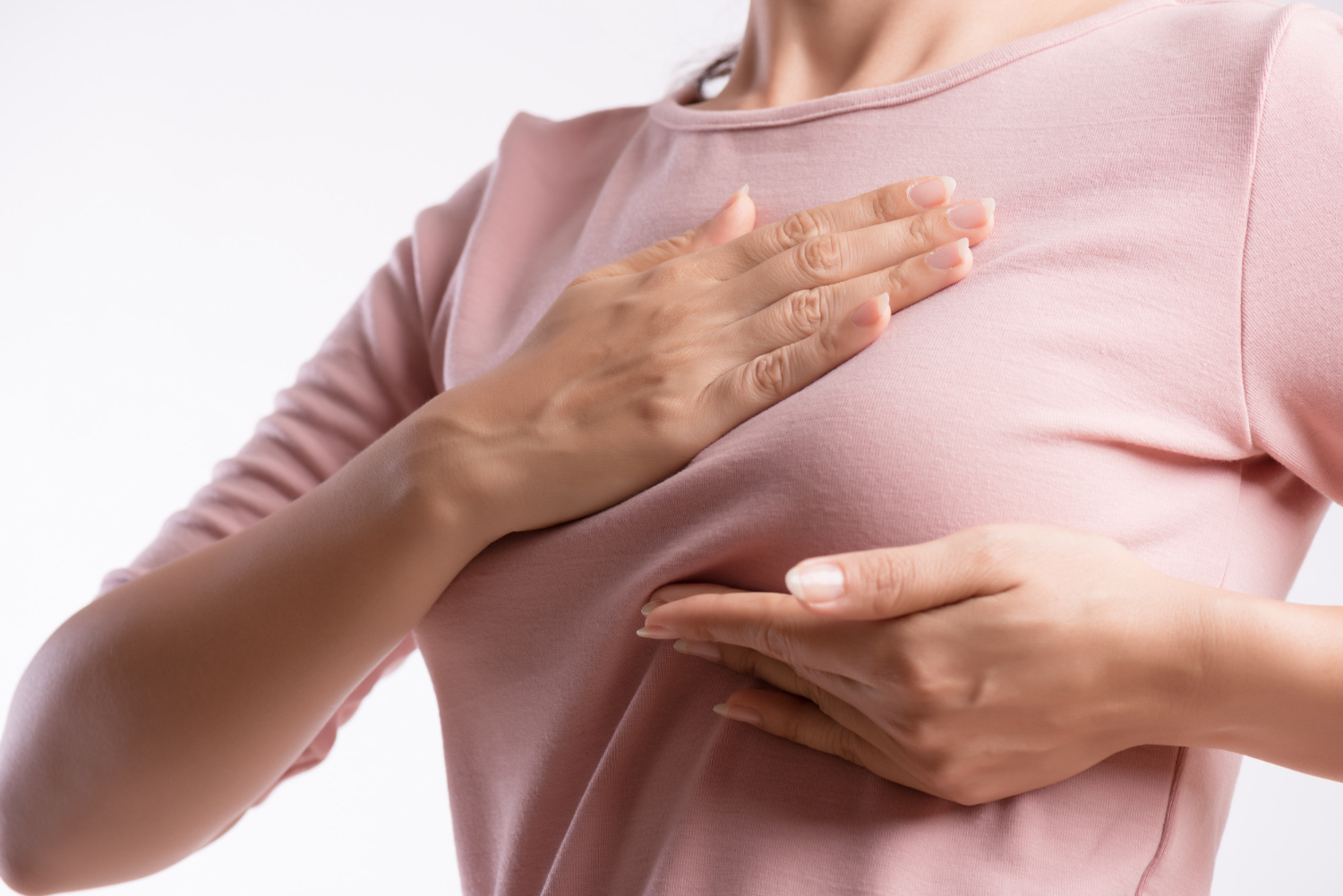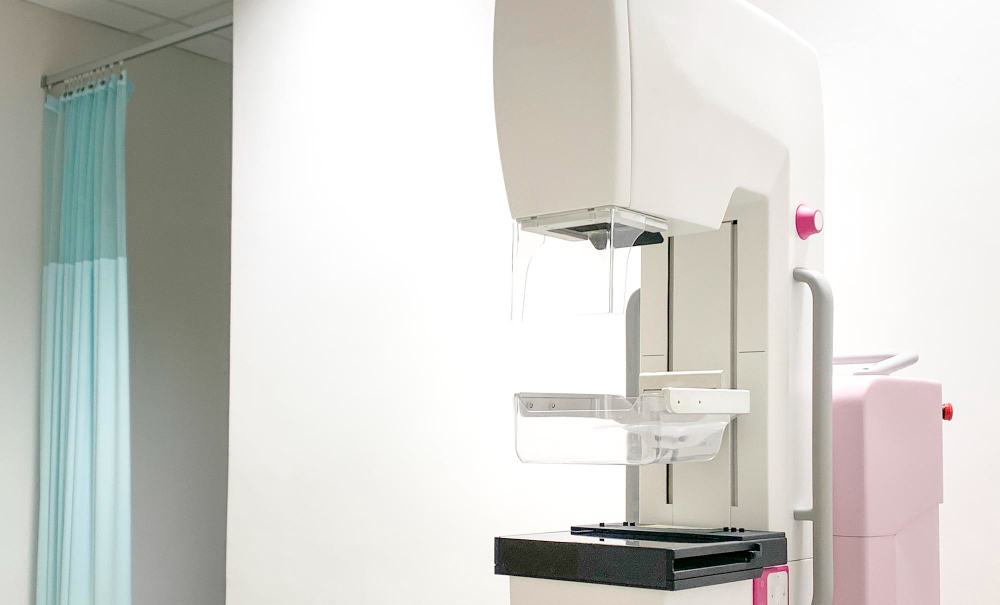Biopsia de mama
Es el procedimiento más idóneo para descartar o comprobar la aparición de cáncer de mama, tomando muestras internas de la lesión.
Un estudio con múltiples técnicas
Las biopsias de mama se consiguen a través de distintos métodos de recolección, algunos más invasivos que otros; sin embargo, esto va a depender del tipo de afección que presente cada paciente y la zona sospechosa a la que se debe acceder.
En cada una de las muestras se le aplica anestesia local a la paciente.
Ofrecen al paciente un alto porcentaje de efectividad diagnóstica.


Procedimientos confiables
Tener un resultado seguro y a tiempo es la mejor forma de detener el surgimiento de una afección más grave.

Resultados en pocos días
En menos de una semana la paciente calmará todas sus dudas al conocer finalmente las conclusiones del patólogo.

El Especialista
Nuestro equipo de patología trabajará exhaustivamente en la muestra para determinar la complejidad de la lesión.
La biopsia excisional es realizada a través de un procedimiento quirúrgico, en el cual se extrae por completo el tejido anómalo presente en el seno. En algunos casos, el cirujano además de extirpar el bulto sospechoso también podrá retirar algunos centímetros del tejido normal presente alrededor de la herida (a esto se le conoce como margen). La ventaja de este tipo de biopsia es que le brinda a la paciente un diagnóstico definitivo con resultados seguros y sin falsos negativos.
¿Cómo se realiza una biopsia excisional?
Si el procedimiento es llevado a cabo en una zona de difícil acceso o impalpable al tacto, es muy probable que se utilicen previamente otros métodos de exploración como mamografías, radiografías o localización mediante aguja con arpón, para marcar exactamente el punto correcto de la biopsia. Una vez ubicada el área, se procede a extraer la totalidad del tejido con la ayuda de un escalpelo y otros instrumentos médicos, al finalizar, la herida es cerrada con puntos de sutura quirúrgicos. La muestra obtenida será examinada por el patólogo, quien se encargará de remitir los resultados encontrados.La biopsia excisional es semejante a una cirugía regular común, efectuándose con anestesia y ameritando algunos días de reposo.
La biopsia percutánea es de tipo ambulatoria, mucho menos invasiva y más rápida que la excisional. Antes del procedimiento, el médico se encargará de aplicar anestesia local y desinfectar el área del seno, posteriormente, extraerá una pequeña porción de tejido anómalo por medio de una aguja o sonda directamente sobre la mama. La muestra removida es enviada al laboratorio para el análisis correspondiente, en pocos días, la paciente conocerá los resultados obtenidos, cuál es su diagnóstico y las próximas acciones a seguir.
La biopsia de mama ecoguiada es una técnica diagnóstica que permite extraer una pequeña porción de muestra directamente desde el punto central de una lesión.
En el procedimiento se utiliza una guía ecográfica para localizar con exactitud el nódulo sospechoso dentro el seno, seguidamente, el médico accederá a dicha área a través de la punción con una aguja hueca diseñada especialmente para estos casos.
Beneficios de una biopsia de mama ecoguiada
- Al tratarse de un método asistido por ecografía la paciente no corre riesgos de exposición a los rayos X.
- Es de carácter ambulatorio.
- Se utiliza anestesia local, por lo que la paciente estará consciente durante todo el procedimiento.
- Es mínimamente invasiva.
- Ayuda a determinar eficazmente si la lesión amerita o no una cirugía posterior.
- Después de cualquiera de estos exámenes es muy común observar la aparición de hematomas temporales, dolores y molestías leves, que deben desaparecer progresivamente con el uso de analgésicos comunes.
- No realizar actividades deportivas que impliquen esfuerzo físico durante 12 horas, o por el tiempo estipulado por su doctor.
- La aplicación de frío local puede ser realmente útil para reducir los malestares del seno.
- El aumento de la temperatura del área, enrojecimiento, sangrado o dolor excesivo pueden ser señales de alarma, ante su presencia, lo mejor es comunicarse rápidamente con el médico tratante.
¿Cómo prepararse antes de una biopsia de mama?

La preparación para una biopsia de mama es simple; sin embargo, en algunos casos puede variar de acuerdo al tipo de procedimiento al que se someterá.
Por lo general, deberá quitarse la ropa con la que llegó a la clínica y cambiarla por una bata médica para mayor comodidad.
En los días previos a la biopsia, el especialista evaluará junto a usted sus antecedentes médicos, alergias y medicamentos de uso diario, a fin de restringir la toma de fármacos que impidan la coagulación o cicatrización. También, le explicarán detalladamente el procedimiento y los pasos que debe seguir el día de la biopsia de mama.
Beneficios
La biopsia de mama es la forma más precisa y directa de descartar una sospecha de cáncer mamario. Adicionalmente, es un procedimiento rápido y poco doloroso.
Las biopsias de seno suelen ser recomendadas por el especialista en caso de:
- Percibir un abultamiento o engrosamiento anormal del seno.
- Notar una imagen dudosa o una lesión extraña en una mamografía, ecografía o resonancia previa.
- Observar alteraciones en la apariencia del pezón, areola o secreciones en los conductos mamarios.
Resultados de la biopsia de mama
Los resultados de una biopsia de mama pueden demorar una semana o un poco más, ya que la muestra de tejido recolectada precisa un análisis patológico exhaustivo.
El informe de patología describirá si existe (o no) la presencia de cáncer de mama o algún otro tipo de cambio precanceroso.

Si el informe muestra un resultado positivo, también incluirá información de interés sobre el tipo de cáncer de mama encontrado. Basándose en estos datos, el médico podrá ofrecerle alternativas de tratamiento efectivas para su condición.
Preguntas frecuentes
Todas las biopsias de mama requieren de anestésicos para evitar que la paciente sienta dolor durante la prueba. En la biopsia de mama percutánea y en la biopsia ecoguiada, se utiliza anestesia local por ser ambas técnicas de tipo ambulatorio; por su parte, la biopsia excisional de mama es semejante a una cirugía y requiere con frecuencia la aplicación de anestesia general.
Se aconseja que la paciente evite cualquier tipo de actividad vigorosa durante las primeras 24 horas, con el objetivo de prevenir que los movimientos bruscos reactiven el sangrado en el lugar de la biopsia.
La biopsia de mama es una prueba mínimamente invasiva, por lo que la paciente saldrá el mismo día de la clínica a su casa. El médico podría sugerir un día de reposo relativo mientras disminuyen las molestías propias del procedimiento.
Entre los posibles riesgos derivados de una biopsia de mama se encuentran:
- Inflamación de la mama.
- Hematomas.
- Infección.
- Cambios en la apariencia de la mama ocasionados por la porción de tejido extraída y la cicatrización de la misma.